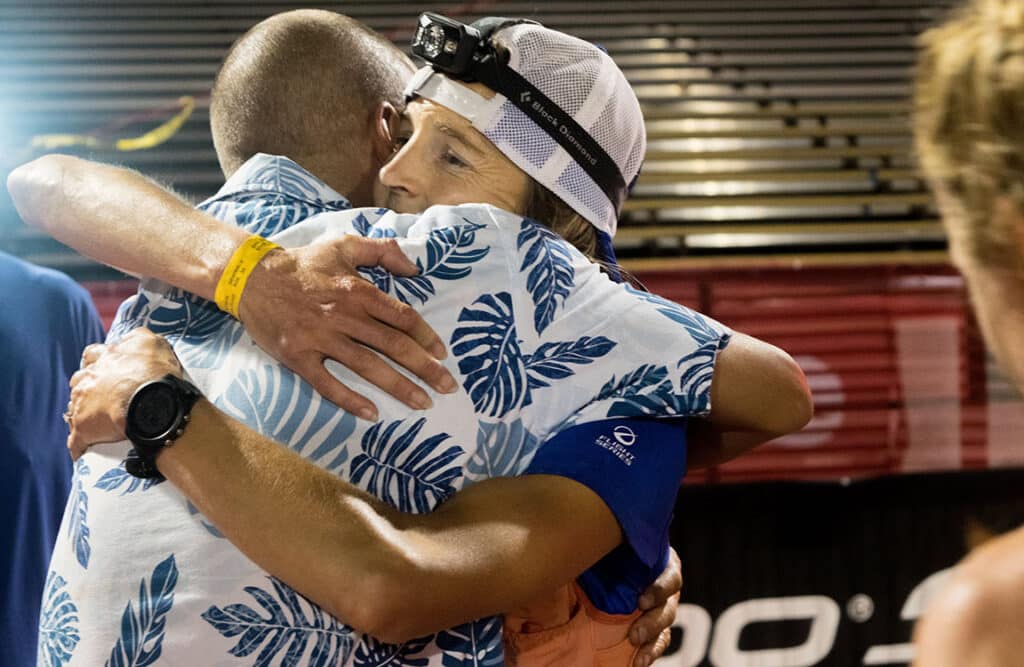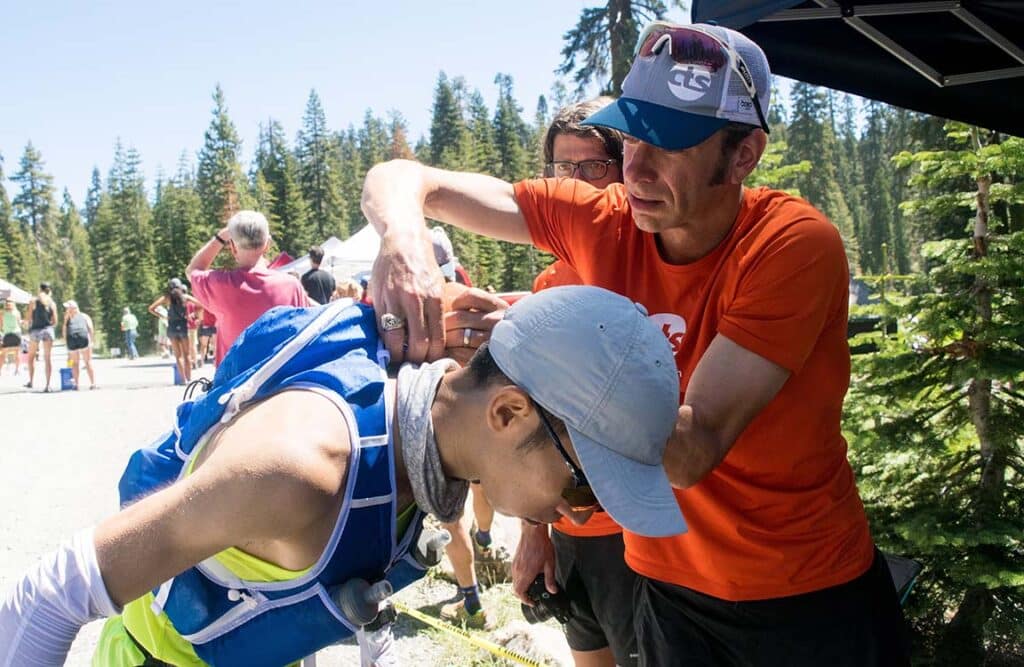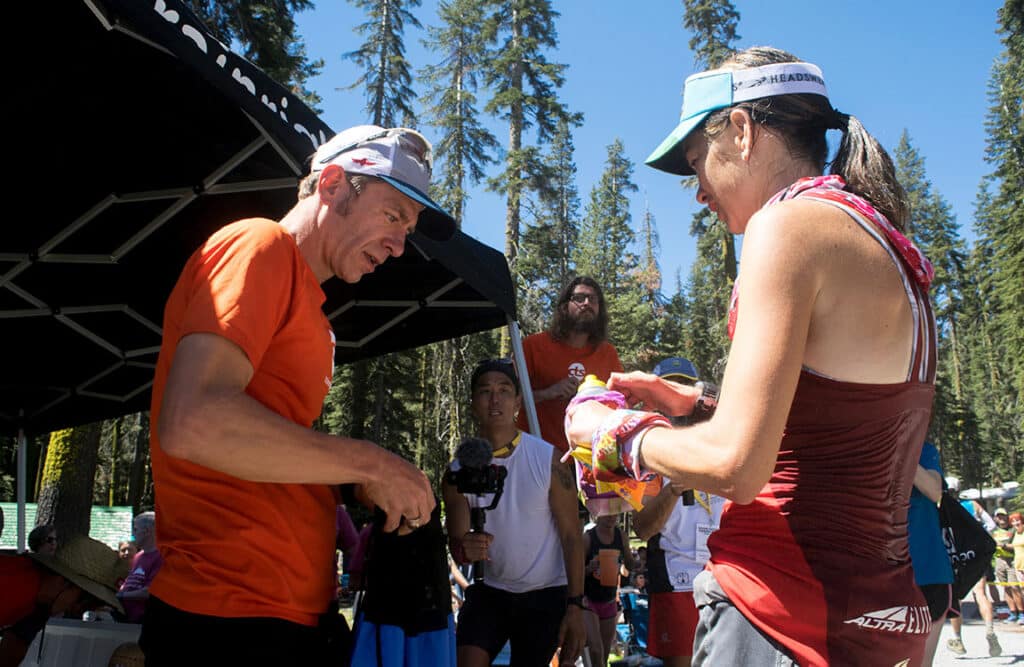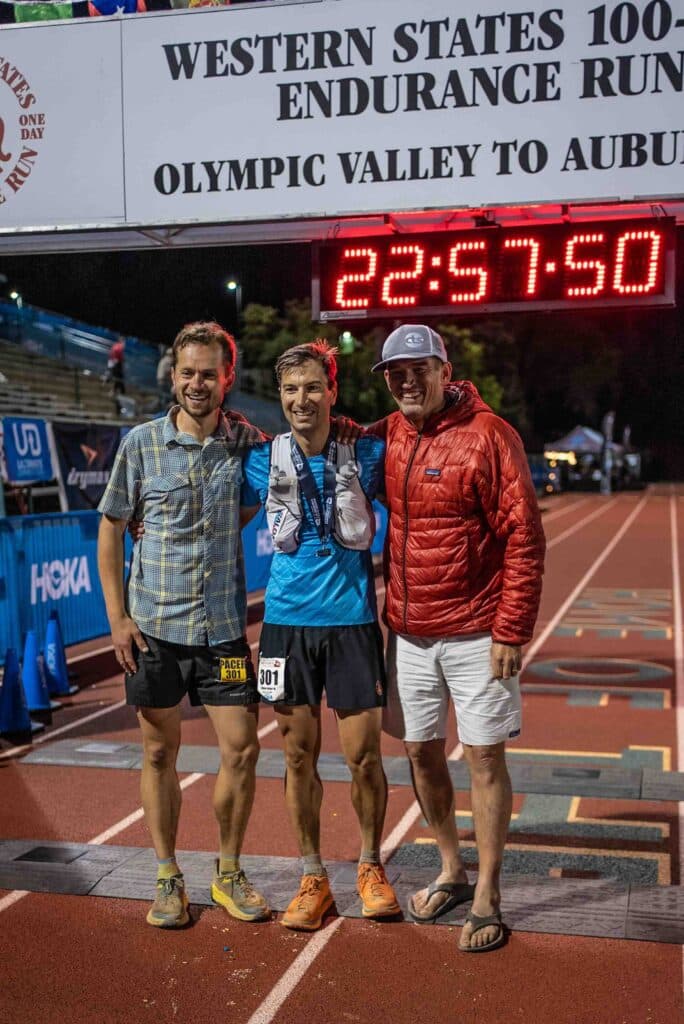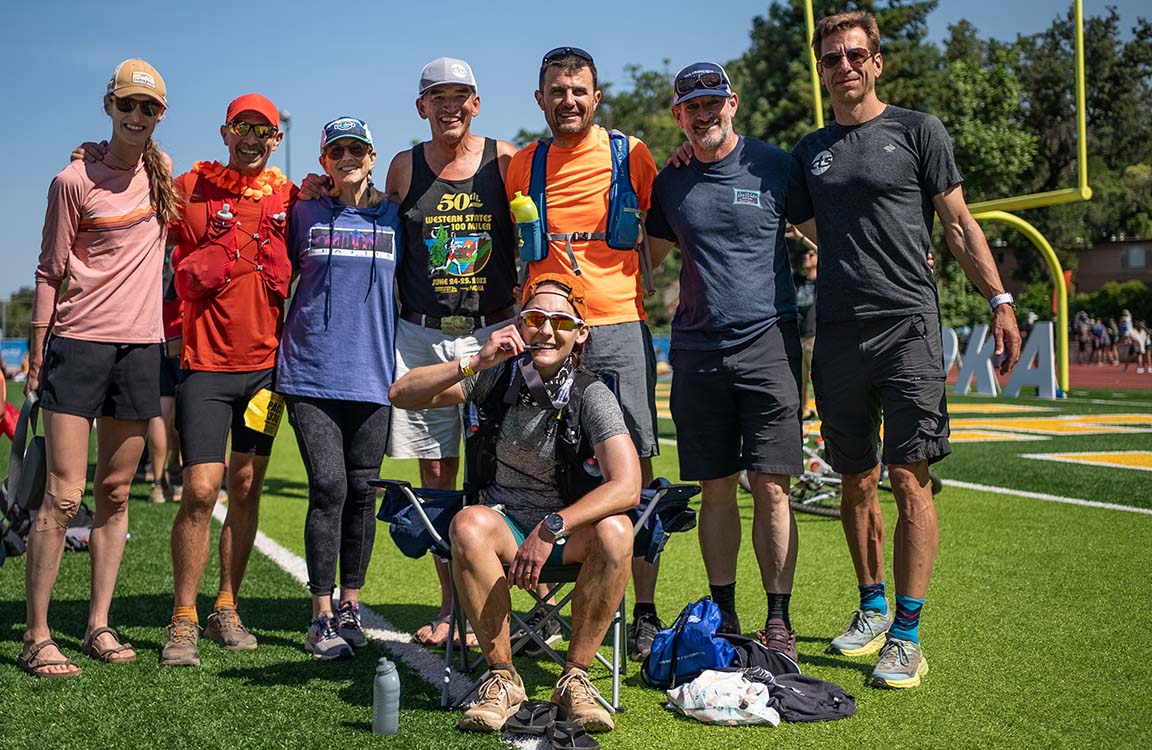
How CTS Coaches Plan to Boost Athlete Performance at Western States
By Jim Rutberg,
CTS Pro Coach,
Co-author “Training Essentials for Ultrarunning”
With more than 20 athletes scheduled to compete in the 2024 Western States Endurance Run (WSER), CTS decided to mount our most ambitious race-support plan to date. The challenge of running 100 miles from Olympic Valley to the Placer High School track in Auburn, California is daunting for athletes and challenging for their support crews. We cannot make the race easier for athletes, but with more than a dozen coaches working together we have a plan to help athletes achieve their best-possible performances on the day.
Western States is one of the oldest and most prestigious ultramarathons in the United States. CTS Coaches and Athletes have a ton of experience and expertise competing in and coaching athletes for the race. CTS Coaches worked with former champions like Kaci Lickteig, 2023 women’s runner-up Katie Schide, and 2023 fourth place finisher Jaisheng Shen. Former winner Stephanie Howe is on our coaching and nutrition staff. And although hands-on experience with specific races isn’t always necessary for coaching success, CTS Coaches Jason Koop, Andy Jones-Wilkins, Sarah Scozzaro, and John Fitzgerald have run a combined 13 editions of Western States. We know the event and the course intimately, and know how to prepare champions, competitive age-groupers, time-cut chasers, and first-timers.
Pre-Race Preparation
Most of the 20+ athletes we will support at the 2024 Western States have worked with a CTS Coach for more than a year. Several have worked with CTS Coaches through a multi-year process of qualifying for the WSER lottery or training to earn a Golden Ticket at a qualifying race. Some sought coaching once they received their entry through the WSER lottery.
Fitness & health
Physical training is an obvious aspect of WSER preparation. Maximizing aerobic performance is the top priority because greater fitness gives an athlete more tools to work with on race day, whether for elevated performances or coping with adversity.
Athlete health is an often-overlooked component of maximizing fitness. An athlete who is sick or injured misses training, and those small misses add up over time. In our experience, over the long term, an athlete who trains a little less and stays healthy can achieve the same or better race performance than an athlete who pushes harder or trains more hours but deals with more frequent injuries and illnesses.
WSER-specific preparation
Western States is notable for many things, but from a preparation standpoint, three of the most important challenges are heat, nutrition/hydration, and the net loss of elevation. All of these challenges can be addressed in training. Coaches create heat acclimation strategies and help athletes devise “bull’s-eye nutrition strategies” and conduct gut training to prepare athletes to consume adequate calories and fluid every hour for up to 30 consecutive hours. There is a lot of climbing in WSER and even more descending. Rather than training specifically to run downhill (not much downhill-specific training is necessary or effective), coaches work with athletes on strategies for slowing the onset of serious muscle damage from eccentric contractions.
Western States Race Support
What does it take to support athletes in meaningful and effective ways at Western States? We divide it into three main categories:
Athlete Race Day Plans
These race day plans are created individually with athletes in the weeks and months before the race. They include everything from process and outcome goals to pacing strategies, nutrition plans, gear lists, and contingencies for how to adjust for potential calamities. The plans themselves are not complicated because complexity just introduces more opportunities for things to go wrong. Instead, we use preparation time in training to practice skills and habits so athletes have fewer things to consciously think about on race day.
Athlete Cards
Specifically for WSER, CTS Coaches created Athlete Cards to ensure that critical athlete information is accurately communicated as the athlete progresses through the course. This isn’t always necessary when you’re crewing one or a small number of athletes and you’re leapfrogging the athlete to see them at multiple aid stations. But athletes at WSER will interact with multiple coaches, so we’re taking steps to be prepared when athletes arrive at the next station.
Crewing Education
Within the CTS Coaching Education Program, we have created a whole section on best practices for crewing athletes during ultradistance events. Key points include:
- “If it ain’t broke, don’t fix it.”: When athletes are doing well and everything is going to plan, give light encouragement, make sure they have what they need for the next section, and send them on their way.
- Tell athletes the truth: Athletes are smart and they know when they are having a good race or a bad one. Don’t tell them they look great when they don’t. Acknowledge the struggle and the effort, and help them course correct.
- Get them moving: First, assess the athlete’s physical and mental state to determine what they need from a support standpoint. Time spent making zero forward progress is difficult to make up on course. If they can and want to continue, it’s best to be quick and efficient in aid stations and keep moving.
► Free Ultrarunning Training Assessment Quiz
Take our free 2-minute quiz to discover how effective your training is and get recommendations for how you can improve.
The Impact of Race Support
Although one athlete crosses the finish line, it takes a team to get there. Research shows that athletes with strong support networks are more likely to achieve training goals and arrive at the start of their goal races (not a trivial feat in itself). On race day, athletes are more likely to finish an ultramarathon if they feel emotionally supported on-site and/or virtually (i.e., knowing your family/followers are watching the live tracking) (Thornton 2023). And then there is the logistical assistance of having the right stuff (food, fluids, gear) at the right places, along with the guidance from a trusted advisor.
Does it really matter or is coaches supporting athletes at races just a “feels good, looks good” activity? Our data says showing up for athletes makes a significant, measurable improvement in performance. We know this because CTS Athletes have – across many ultrarunning, cycling, and triathlon events over more than 20 years – consistently beaten the finisher rates at major events.
Advantages of race support
Some of the advantage is coaching athletes to be better prepared before getting to the races in the first place. This includes fitness and performance training, of course, but also includes nutrition and pacing strategies, racing tactics, and crisis management. At times we even offered stand-alone race support packages to competitors at the Leadville 100 MTB and Unbound Gravel cycling races, and even athletes not coached by CTS finished at higher rates than average when supported by CTS Coaches at events!
Specifically at Western States, in 2023 the finisher rate for the whole race was 86.5% and the finisher rate for CTS-supported athletes was 93%. Data from the 2023 WSER survey also reported that 36% of all finishers utilized coaching services and 47% of sub-24 hour finishers used coaching services. Coaching helps athletes go faster and professional support at races increases finisher rates even more.
Enjoying This Article? Get More Free Running Training Tips
Get our coaches' best training advice, delivered straight to your inbox weekly.
#SeeYouAtStates
Showing up for athletes and supporting them on race day works, and it’s a really fun part of our job! If everything goes to plan, there is not much coaching work to do during a race other than offer some light encouragement. And even when things go sideways, the athlete should be able to deploy plans and skills developed during training. Where showing up makes the most difference is in showing athletes you care, being a calm source of reassurance amidst the chaos, and providing simple, effective adjustments when athletes are off track.
So, where will you see CTS at Western States? We’ll have tents staffed by CTS Ultrarunning Coaches at Duncan Canyon, Robinson Flat, Forest Hill, Pointed Rocks, and Michigan Bluffs. CTS Ultrarunning Head Coach and “Training Essentials for Ultrarunning” author Jason Koop will travel to multiple aid stations as the elite field progresses through the race. And we look forward to cheering all racers to the finish line on the Placer High School track!
References:
Thornton, Owen R, et al. “The Psychological Indicators of Success in Ultrarunning – a Review of the Current Psychological Predictors in Ultrarunning.” Research Square (Research Square), 15 Mar. 2023, https://doi.org/10.21203/rs.3.rs-2675495/v1. Accessed 26 Oct. 2023.


